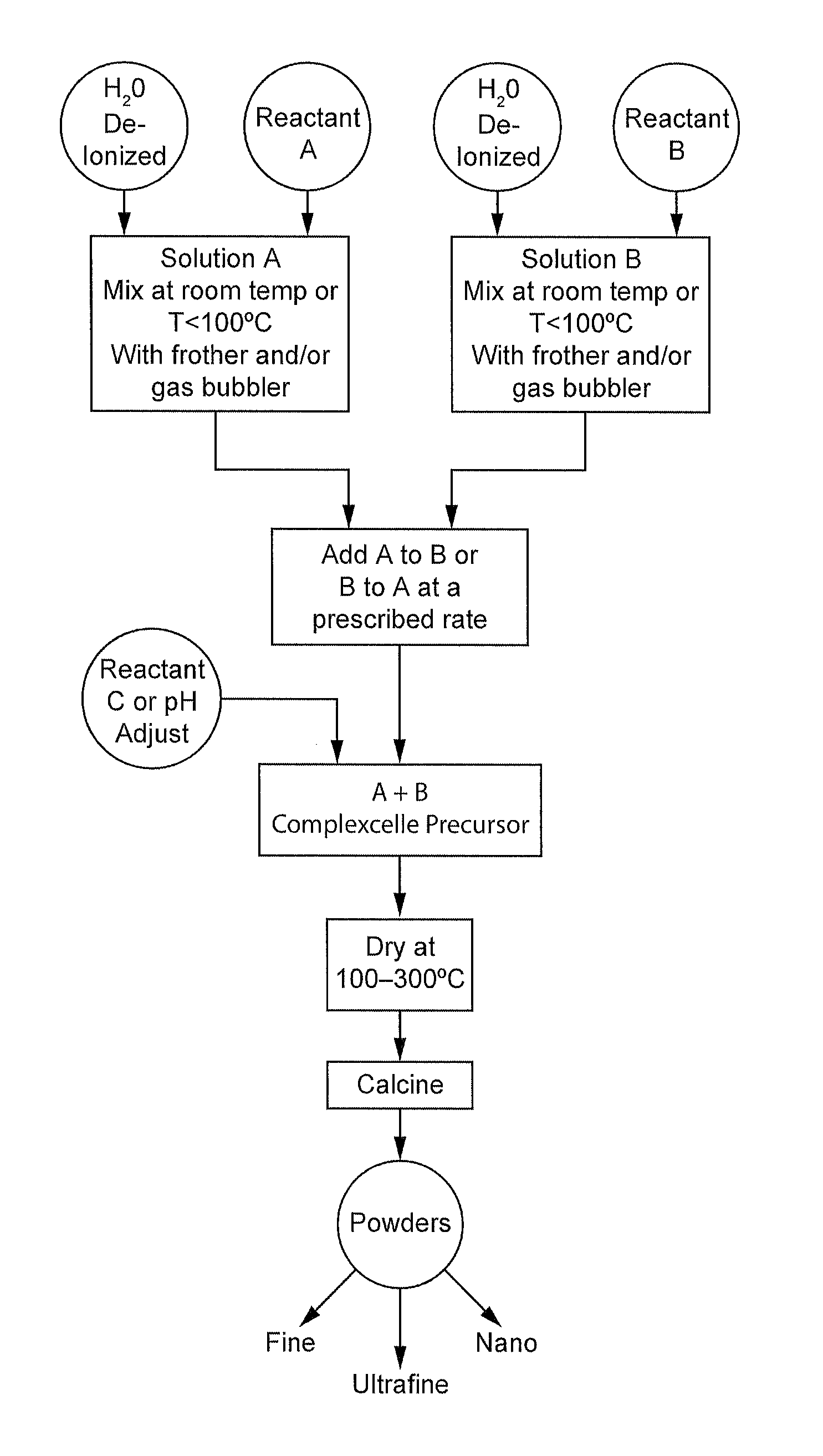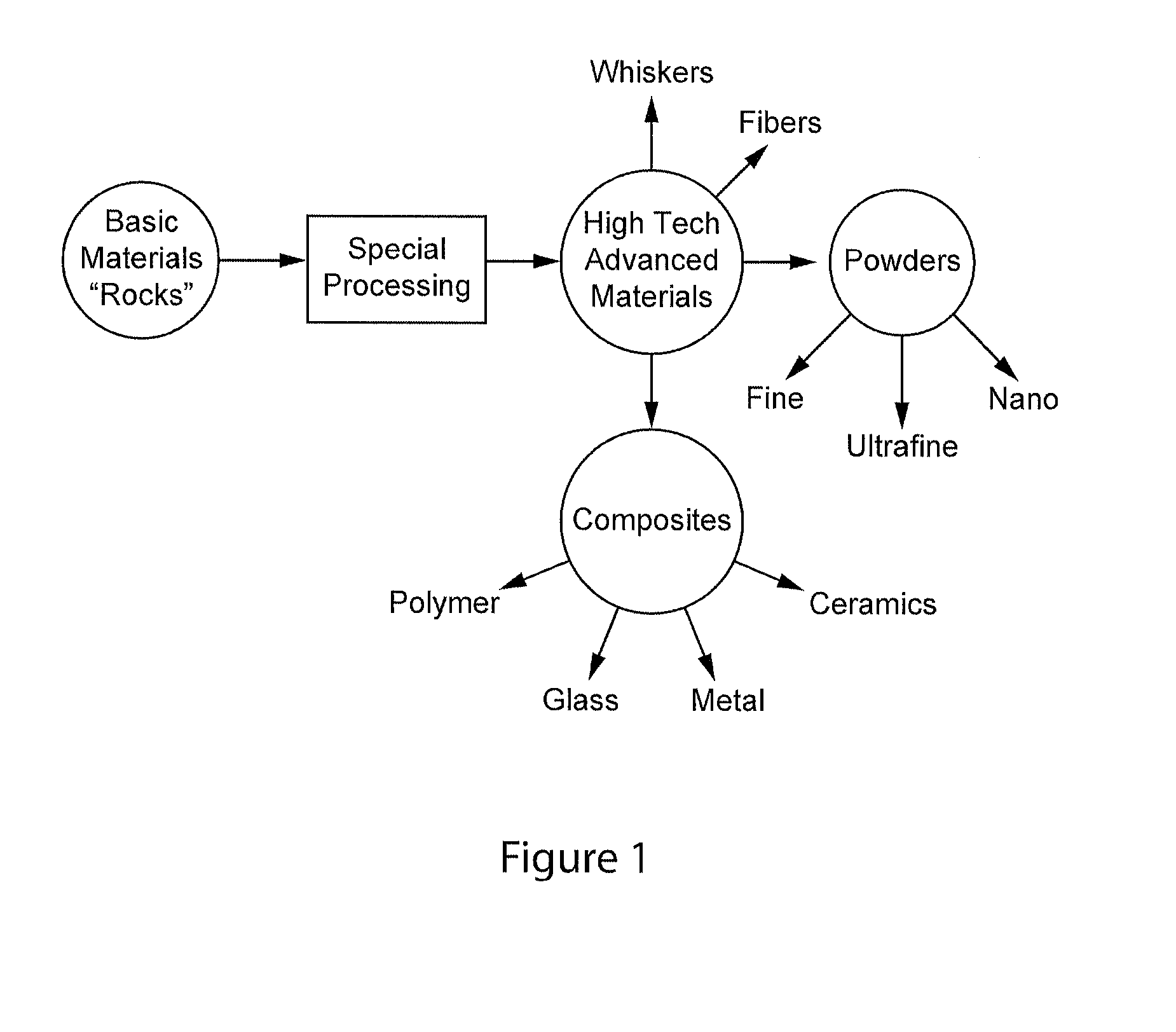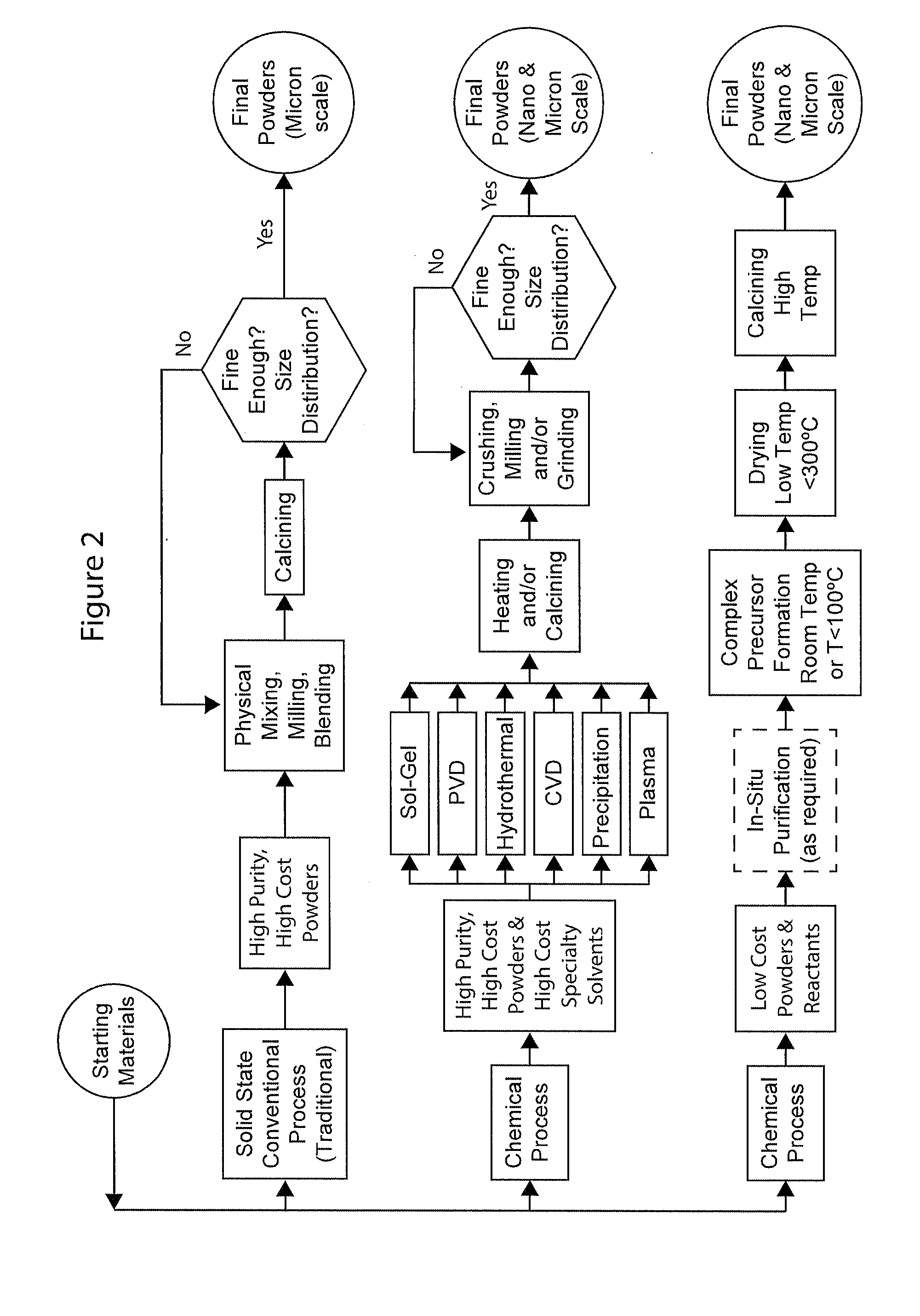Complexometric Precursors Formulation Methodology for Industrial Production of High Performance Fine and Ultrafine Powders and Nanopowders for Specialized Applications
- Summary
- Abstract
- Description
- Claims
- Application Information
AI Technical Summary
Benefits of technology
Problems solved by technology
Method used
Image
Examples
example 2
[0146]Lithium cobalt oxide was prepared using a reactor vessel as shown in FIG. 4 with a mixer having an agitator blade as shown in FIG. 5. In one reactor, a weighed amount of lithium carbonate (46.2 grams, 99% purity) was added to the reactor containing one liter of deionized water. Carbon dioxide gas was allowed to flow through the reactor using a gas tube bubbler on the side or a diffuser bubbler at the bottom of the vessel. A second reactor also equipped with a tube bubbler or a diffuser bubbler contained a weighed amount of cobalt carbonate (120.2 grams, 99% purity) and one liter of deionized water. Carbon dioxide gas was allowed to flow through the bubblers. Ammonia, 250 ml, was added to the second reactor. After a given amount of time to allow dissolution or vigorous mixing of the corresponding reactants, the cobalt solution was pumped into the lithium solution at a rate of at least 1 L / h. Reaction temperature was ambient and gas flow maintained a sufficient amount of bubbles...
example 3
[0151]The powders in Examples 1 and 2 were refired at 900° C. for another 5 h. Coin cells were prepared as described. A comparison of the battery cycling tests is given in FIG. 15 at 1 C for 500 cycles.
[0152]In the battery cycling tests at a higher C rate of 1 C, the lithium cobalt oxide powder from Example 2 that was refired again performed significantly better than the commercial powder that was also refired at the same temperature and for the same time period. The capacity of the commercial sample dropped from 120 mAh / g to 20 mAh / g after 200 cycles. The CPF sample had a capacity of 100 mAh / g after 300 cycles and 80 mAh / g at 400 cycles.
[0153]The scanning electron micrographs of the refired samples are shown in FIGS. 16 and 17 at the same magnification of 10000× for comparison. While recalcination for another 5 h has caused more fusion in both samples, it is noted that the commercial sample of lithium cobalt oxide has larger fused particles and the layers were also more fused toget...
example 4
[0154]The same procedure described in Example 2 was used in this example but with the added nickel and manganese compounds to illustrate the synthesis of multicomponent lithium oxides by the CPF methodology. The formulation made is Li1.2oNio.1sMno.5oCoo.1202 which is a high energy lithium nickel manganese cobalt oxide material for lithium ion batteries that would meet the electric vehicle performance standards.
[0155]Nickel hydroxide (16.8 grams, 99%) and cobalt carbonate (14.4 grams, 99.5%) were weighed out and placed in a reactor vessel described in FIG. 4 equipped with a tube bubbler and an agitator as shown in FIG. 5 already containing one liter of deionized water and 140 ml of acetic acid (99.7%). The solids were mixed at ambient temperature to obtain a solution of both metals. Manganese acetate (123.3 grams) was then weighed out and added to the same reactor. A similar reactor was also set-up to contain one liter of deionized water and lithium carbonate (44.7 grams, 99%). Carbo...
PUM
 Login to view more
Login to view more Abstract
Description
Claims
Application Information
 Login to view more
Login to view more - R&D Engineer
- R&D Manager
- IP Professional
- Industry Leading Data Capabilities
- Powerful AI technology
- Patent DNA Extraction
Browse by: Latest US Patents, China's latest patents, Technical Efficacy Thesaurus, Application Domain, Technology Topic.
© 2024 PatSnap. All rights reserved.Legal|Privacy policy|Modern Slavery Act Transparency Statement|Sitemap



